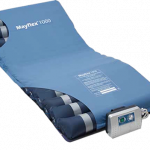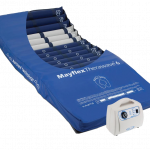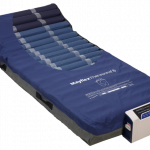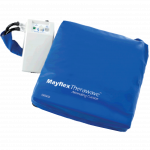PRODUCTS BY SECTOR
Pressure Sore Treatment
Treating Pressure Ulcers
Multidisciplinary care teams
Pressure ulcers have many interrelated factors arising which cause health problems, these may result in your care being provided for by a team made up of different types of healthcare professionals, which is sometimes know as a multidisciplinary team (MDT).
MDT’s may include:
- a social worker
- a tissue viability nurse (a nurse who specialises in wound care and prevention)
- a physical therapist
- a dietician
- ccupational therapist
- medical and surgical professionals with experience in pressure ulcer management
Changing body position
It is important to avoid pressure on areas that are vulnerable to pressure ulcers or where the ulcers have already formed. Moving and regularly changing positions helps to:
- relieve pressure on any ulcers that have developed
- prevent development of pressure ulcers in vulnerable areas
After a risk assessment is completed, your care team will draw up a ‘timetable for repositioning’, this will state how often you need to move or be moved. For some people, this may be as frequant as every 15 minutes. Others, may just need to be moved only once every two hours.
The risk assessment will also consider the most effective way to avoid putting any pressure where ever possible on vulnerable areas of skin.
A nurse or physical therapist may also give you advice and training about:
- how often you need to move or be moved
- correct sitting and lying positions
- how best to support your feet
- how you can adjust your sitting and lying position
- how to keep a good posture
- the special equipment that you should use and how to use it
Pressure Mattresses and Cushions
There are a range of special mattresses and cushions that can relieve the pressure on parts of the body that are vulnerable. Care teams will discuss the types of mattresses and cushions that are most suitable for you.
People with pressure ulcers will require different types of mattresses the higher the grade the more sophisticated mattress or bed system will be needed. For example, there are mattresses which are connected to a constant flow of air, which is automatically regulated to reduce pressure as and when required.
Dressings
Specially designed bandages and dressings can be used to protect pressure ulcers which can help speed up the healing process. Examples of these include:
- hydrocolloid dressings – which contain special gel that encourages the growth of new skin cells in the ulcer while keeping dry the surrounding healthy area of skin
- alginate dressings – made from seaweed and containing sodium and calcium, which are known to speed up the healing process
Topical preparations
Topical preparations, such as ointments and creams, can be used to help speed up the healing process and also prevent further tissue damage.
Antibiotics
If you have a pressure ulcer, Antibiotics are usually only prescribed to treat an infected pressure ulcer and prevent the infection from spreading and antiseptic creams may also be applied directly to ulcers to clear out any bacteria that may be present.
Nutrition
Certain dietary supplements, have been shown to accelerate wound healing such as zinc and vitamin C
If your diet lacks in these vitamins and minerals, your skin may be more vulnerable to developing pressure ulcers, and as a result of this, you may be referred to a dietician so that a suitable dietary plan can be drawn up for you.
Debridement
In some cases, it may be necessary to remove the dead tissue from the pressure ulcer to help stimulate the healing process. This procedure is known as debridement.
If there is a small amount of dead tissue, it may be possible to remove it using specially designed paste and dressings. Larger amounts of dead tissue may be removed using mechanical means. Some mechanical debridement techniques may include
- laser – dead tissue is removed using beams of light which focus on the area
- cleansing and pressure irrigation – dead tissue is removed using high-pressure water jets
- ultrasound – dead tissue removal using low-frequency energy waves
- surgical debridement – dead tissue is removed using surgical instruments, such as scalpels and forceps
A local anaesthetic will be used to numb the area of skin and tissue around the ulcer so that debridement does not cause any pain or discomfort.
Maggot therapy
Maggot therapy, also known as larvae therapy, is an alternative method of debridement. Maggots are ideal because they feed on dead, and infected tissue without touching the healthy tissue. They also help to fight infection by releasing substances that kill bacteria and stimulate the healing process.
During maggot therapy, the maggots are mixed into a wound dressing and the area is covered with gauze. After a few days, the dressing is taken off and the maggots are removed.
Many people may find maggot therapy off-putting but research has found that it is often more effective than more traditional methods.
Surgery
In some cases it may not be possible for a grade three or four pressure ulcer to heal. In these cases, surgery will be required to seal the wound and prevent any further tissue damage occurring.
Surgical treatment involves cleaning and closing the wound by bringing together the edges (direct closure) or by using tissue moved from a nearby part of the body (flap reconstruction).
Pressure ulcer surgery can be challenging, especially because most people who have the procedure are already in a poor state of health. As a result of the risk factors, a large number of different complications can occur after surgery, including:
- infection
- tissue death of the implanted flap
- blood poisoning
- muscle weakness
- internal bleeding
- blisters – small pockets of fluid that develop inside the skin
- recurrence of the pressure ulcers
- infection of the bone – the medical term for this is osteomyelitis
- abscesses – painful collections of pus which develop inside the body
- deep vein thrombosis – a blood clot that develops inside the veins of the leg











